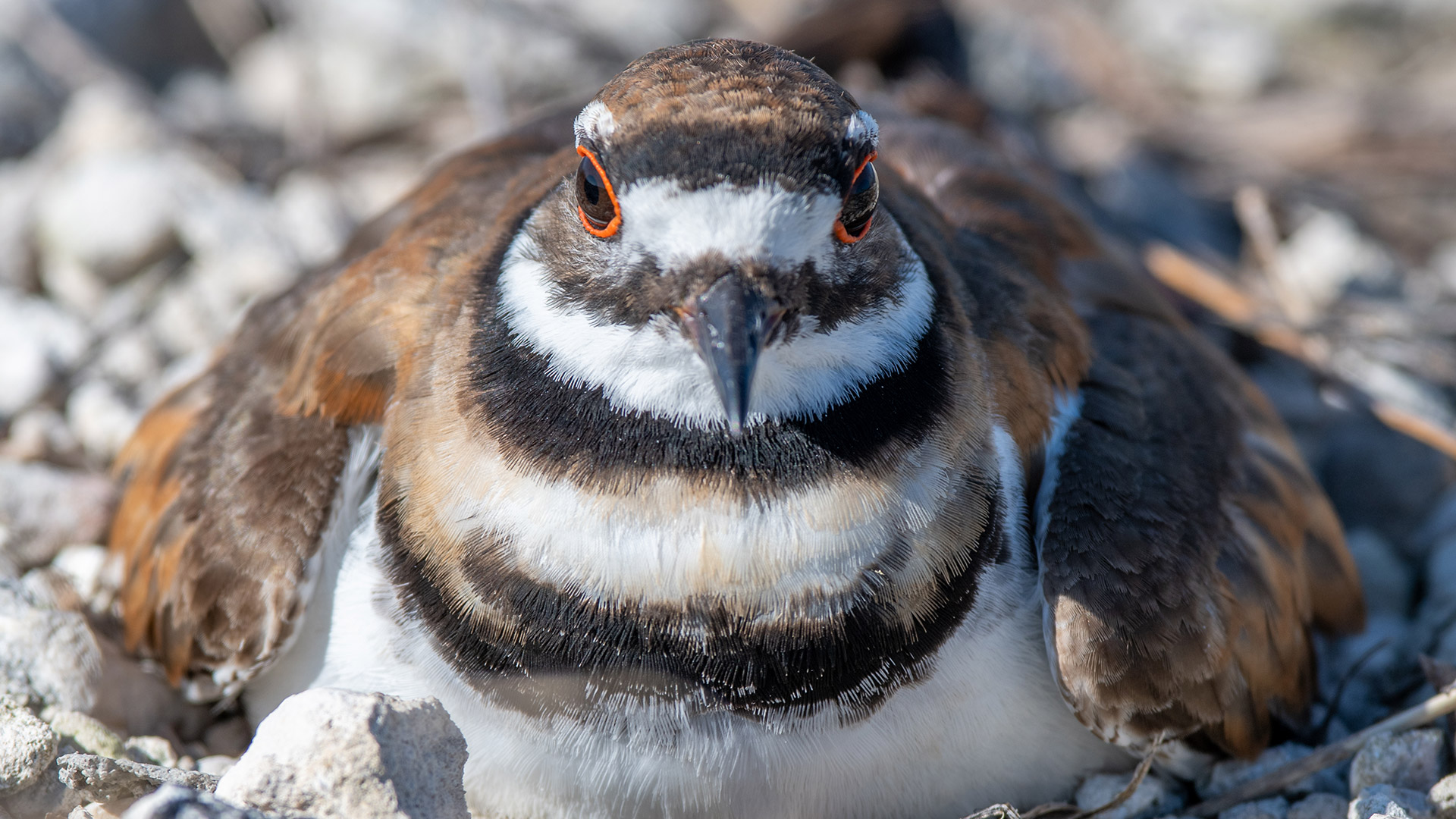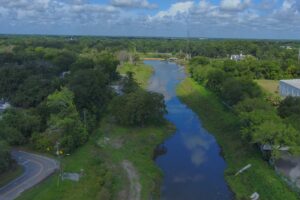A killdeer saga unfolds at
Lake Apopka Wildlife Drive

Story and photos by John Horton, Altamonte Springs resident and Lake Apopka Wildlife Drive patron and steward
John Horton is an Altamonte Springs resident who loves visiting the Lake Apopka Wildlife Drive. Fortunately for us, he’s also a talented photographer. On June 12 — the day that the St. Johns River Water Management District reopened the wildlife drive to vehicle access following a temporary closure — Horton was among the first people to visit his beloved wildlife drive.
Horton came across a killdeer (Charadrius vociferous) sitting on a nest of four eggs near the water’s edge. The nest was made of rocks and gravel, which is common for members of the plover family. Horton immediately took action to protect the nest from inadvertent destruction and began documenting the daily activities of momma and her soon-to-be hatchlings.
We asked Horton to share his story. He was more than happy to oblige.
“I looped around Lake Apopka Wildlife Drive and got two wooden stakes from (district Land Manager) Maria Zondervan and went back and put one on either side of the nest,” Horton says. “Then I put some orange flagging tape on each of the stakes, primarily so the mowing crew didn’t mow that strip. I was concerned as to the mother’s reaction, but she made no alarm sound; just the normal actions of looking around and occasionally standing over the eggs to cool them down.”
The Lake Apopka Wildlife Drive is part of the St. Johns River Water Management District’s Lake Apopka North Shore on 20,000 acres of former muck farms being restored to improve water quality in the lake. Through this work, the district has transformed the area into a haven for wildlife and provided recreation for the public. The North Shore property was once part of the lake itself, but the rich soil of the wetlands were separated from the lake in 1941 by a large levee for farming. This decreased the size of Lake Apopka from more than 50,000 acres, to just over 30,000 acres. The headwaters of the Ocklawaha Chain of Lakes, the lake was designated for cleanup under the Surface Water Improvement and Management Act of 1987.





